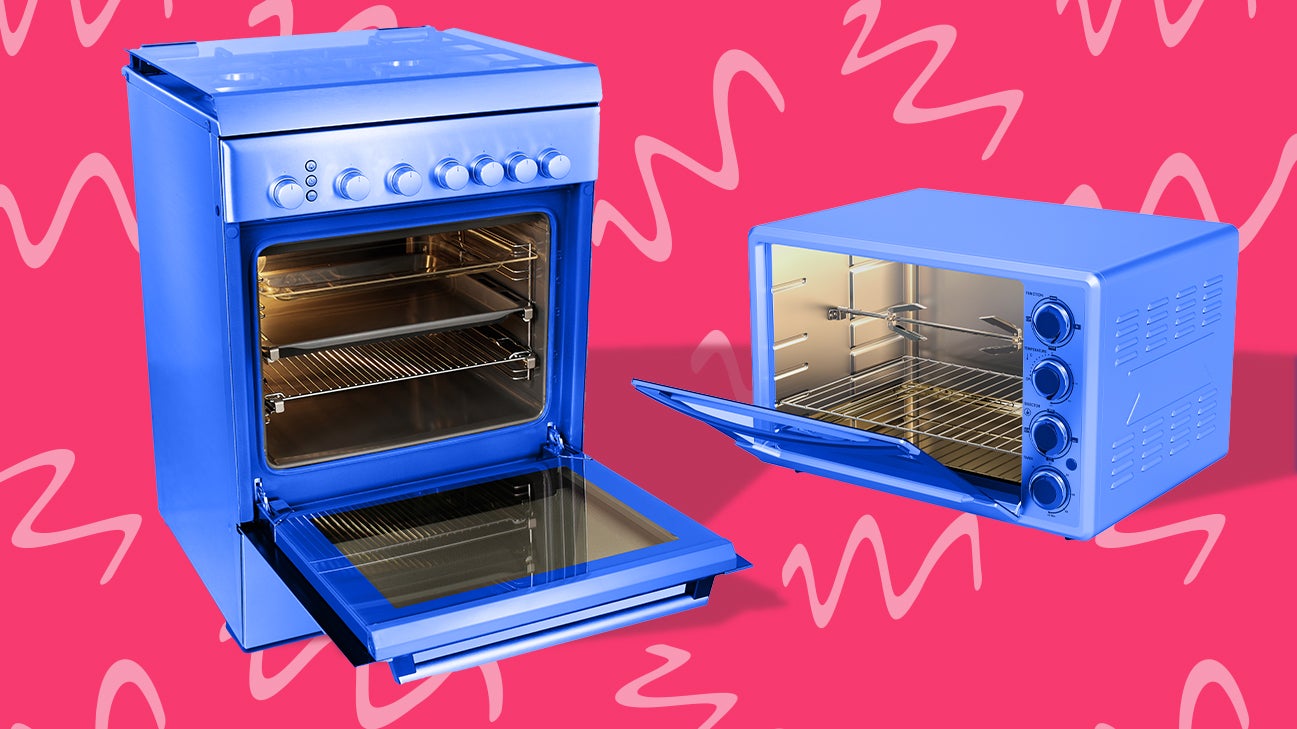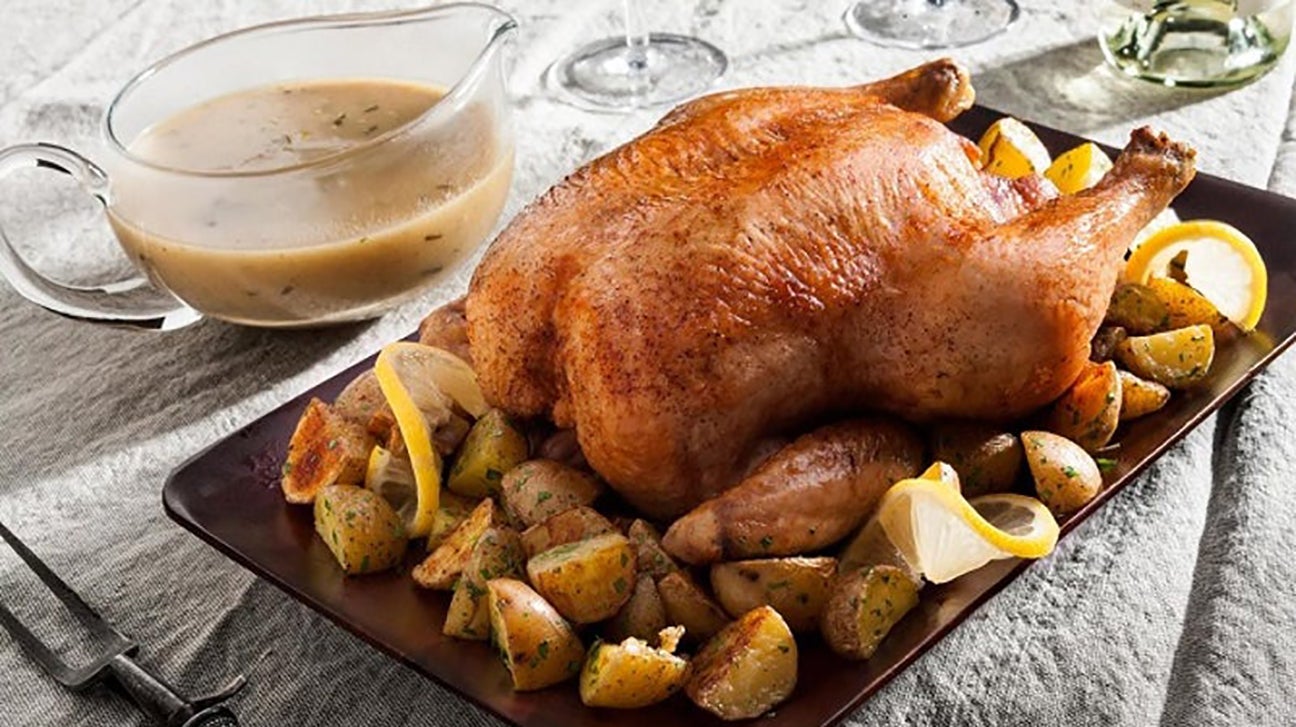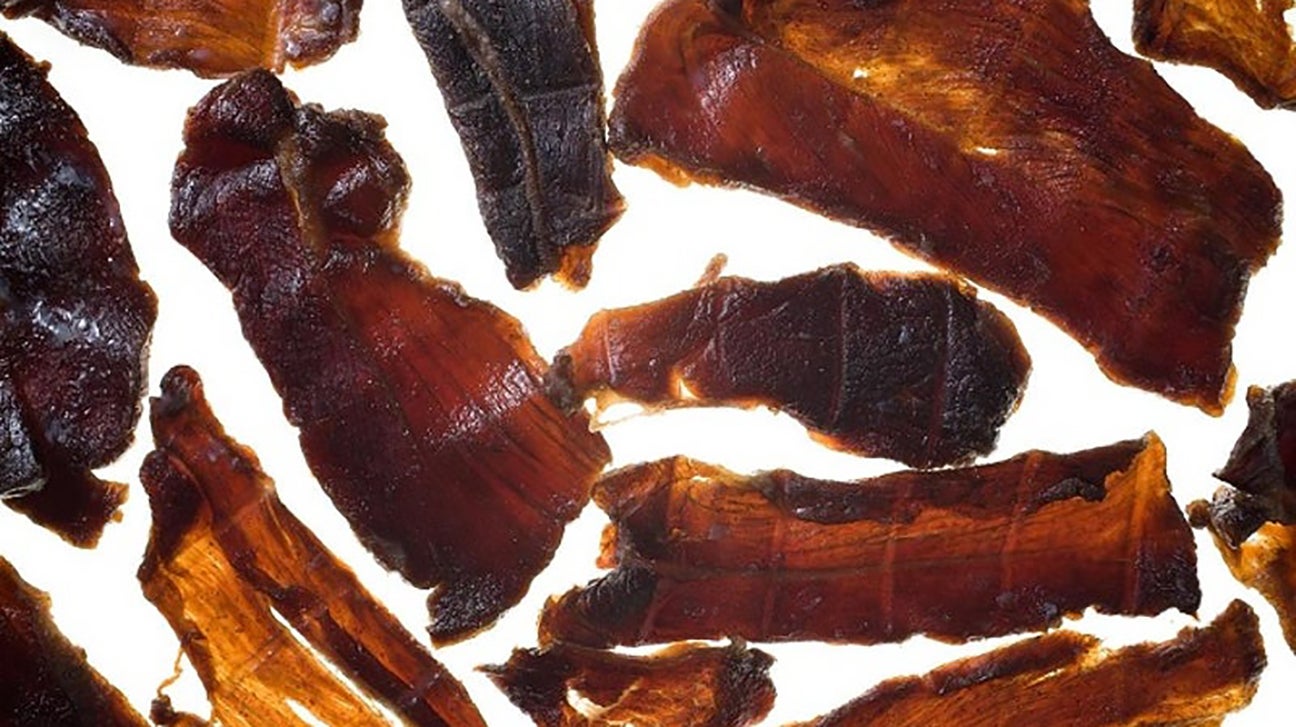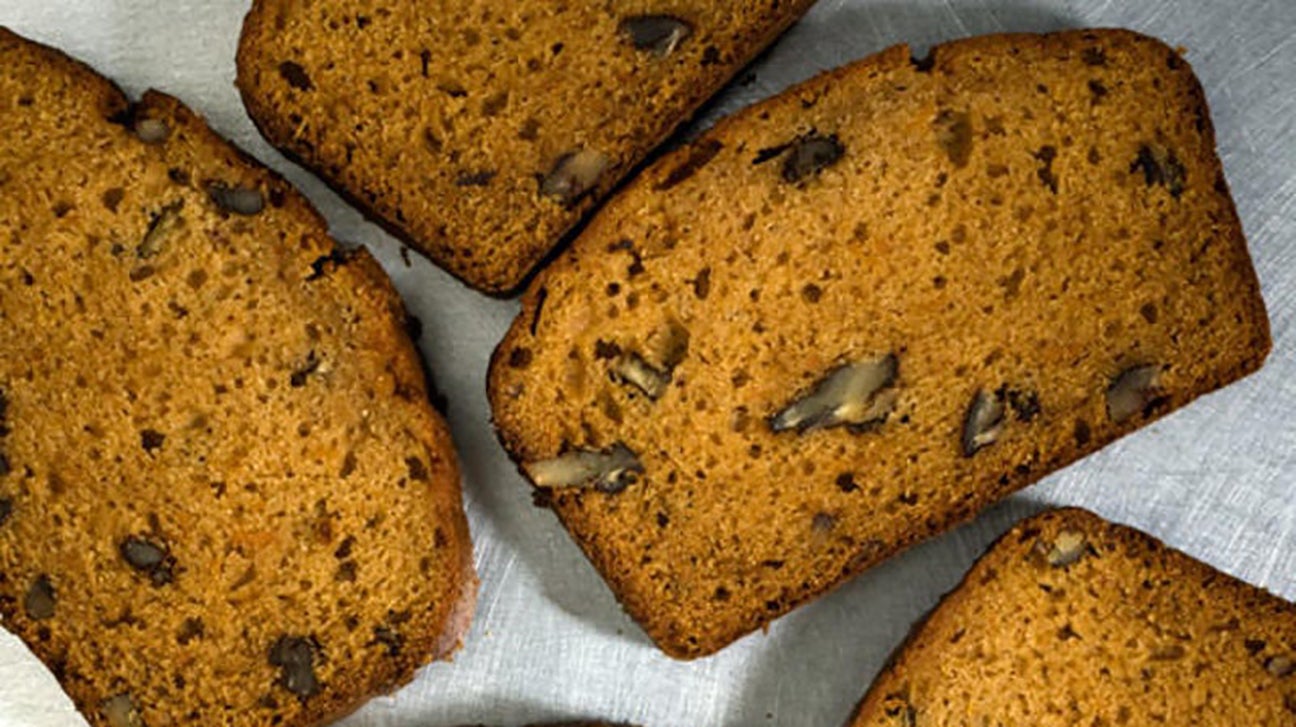
If you bake with much regularity, you’ve probably asked the question, “What’s the difference between a convection oven and a conventional oven?” — which inevitably leads to another query: “Which one is better?”
The first answer is easy: A conventional oven radiates high temps from its heating elements. A convection oven does so, too, but adds a fan to circulate the hot air.
The second answer is a bit more complicated and depends on what you’re making. Unlike the free-flowing art of cooking, baking is more of an exact science. And roasting (the other oven-based cooking method) requires knowledge of how to convert your baking temperature and time to convection standards.
Sound like a formula for confusion? We’re clearing the the (hot) air about the need-to-know differences between regular and conventional ovens.
Differences between convection ovens and conventional ovens
Both conventional and convection ovens can be heated with gas or electricity, but their heat distribution differs.
The heat source in a regular oven is stationary, usually radiating from a heating element in the bottom of the appliance, while in a convection oven a fan circulates the hot air all around the place. (That’s why an air fryer is basically just a countertop convection oven.)
Convection ovens can also be used as conventional ovens by simply turning the fan off, so you can get the best of both worlds.
Pros of a convection oven
Convection ovens allow for even, fast cooking because their temperature stays more consistent, while conventional ovens can have pockets of warmer air (or, conversely, cold spots).
Hot air rises, so when you’re cooking food on both racks in a conventional oven, dishes on the bottom rack may undercook while the food on top burns. No such worries with a convection oven!
The air circulation in a convection oven also helps achieve a perfectly crisp skin on roast chicken and beautifully browned quick breads.
But convection ovens aren’t all-around winners.
Cons of a convection oven
Convection cooking can cause the outside of a cake to bake — and rise — faster than the middle, and the top could blow over to one side. The whole cake could even dry out before it’s fully risen.
Though some bakers have no trouble, it’s usually best to turn off the fans and switch to conventional baking for a cake, especially if you’re making something delicate like angel food cake or macarons.
Then there’s the conversion. You can sometimes cook food up to 25% faster in a convection oven, so you’ll want to check your Thanksgiving turkey a little earlier to prevent an overdone bird.
Conventional ovens typically run 25-30°F cooler than convection ovens set to the same temperature. So if you’re using a convection oven, assume most recipes (unless they specify otherwise) are giving you the recommended cooking times and temps for a traditional oven.
Translation: When converting from conventional to convection baking, reduce the temperature by 25°F. (Though some ovens have options for both modes, with built-in convertors, to save you the math.)
Because convection ovens heat up so fast, there’s usually no need to pre-heat, but you might want to anyway, just in case, especially for baked goods.
What to look for in a convection oven
If you’re in the market for a new oven, make sure the oven has an option to turn the convection fan off, says Susan Reid, a King Arthur Flour recipe tester, oven-buyer, cookbook co-author, and editorial director of Sift, the flour company’s newsstand publication.
Reid looks for ovens with four controls: bake, convection bake, convection roast, and broil.
Convection bake, which has a lower fan speed, creates lovely dried or roasted tomatoes, as well as dehydrated foods. Convection roast, with its higher fan speed, is great for chunky meat with crispy outsides and for nicely caramelized roasted vegetables.
On the other hand, the high fan speed can end up blowing cookies across the pan, or putting tilted “hats” on your cupcakes, Reid says.
Reid recommends using conventional oven settings for quick breads, cupcakes, wet muffin batters, layer cakes, angel food cakes, loaf cakes, sandwich breads, and sweet yeast baking. But some bakers have great luck with convection-baked quick breads, so experiment as you wish.
Always use the setting that the recipe recommends — at least the first time, says Sommer Collier, a recipe developer and author of A Spicy Perspective blog. Check your baked goods 5-10 minutes before the specified bake time when you try the convection method.
“I like to use convection on cookies and breads because it tends to create fuller cookies with an crispy exterior and soft center, and perfectly browned crusty bread,” Collier says.
Another pro tip: Look for convection ovens that have an additional heating element by the fan. This moves the air around in a consistent temperature, promoting more even baking and roasting. Spot this extra feature by looking for ovens labeled “third-element convection,” “true convection,” or “European convection.”
Recipes for conventional and convection ovens
Wanna take your new oven for a test drive? Try both convection and conventional techniques with these recipes.
1. Roasted rosemary and lemon chicken

For crispy skin and juicy meat on a whole roasted chicken, the convection oven is the way to go. This is a good basic way to flavor and cook your chicken.
If you only have a regular oven, you can increase your crisp quotient by leaving the chicken on an uncovered platter in the fridge overnight, which helps dry out the skin (in a good way!) before roasting it.
Get our roasted rosemary and lemon chicken recipe.
2. Thai beef jerky

One of the best things about a convection oven is being able to dehydrate food for healthy, tasty, portable snacks. This recipe tastes like a floral, spicy, savory Thai meal, but you can grab it with your hands and gnaw on it while on the go. (Did we mention it has only five ingredients?)
Get our Thai beef jerky recipe.
3. Pecan and sweet potato bread

Quick breads also benefit from a convection oven (though some say artisanal breads do better than quick ones). With this sweet and nutty sweet potato bread, you can get that crusty outside and moist inside you crave in a great breakfast loaf.
Get our pecan and sweet potato bread recipe.
4. Champagne cupcakes
What better way to celebrate a special occasion than combining champagne and cupcakes into one delightful treat? You can try these glittery mini-cakes in either a conventional or convection oven (again, just remember to lower the oven temp by 25°F if converting to convection).
Get our champagne cupcakes recipe.
5. Warm quinoa salad with roasted autumn vegetables
You can reap rewards from roasting vegetables with that convection fan on, especially with slower-roasting root veggies. Eat them on their own or bulk them with quinoa for a heartier grain salad side.
Get our warm quinoa salad with roasted autumn vegetables recipe.

0 Commentaires